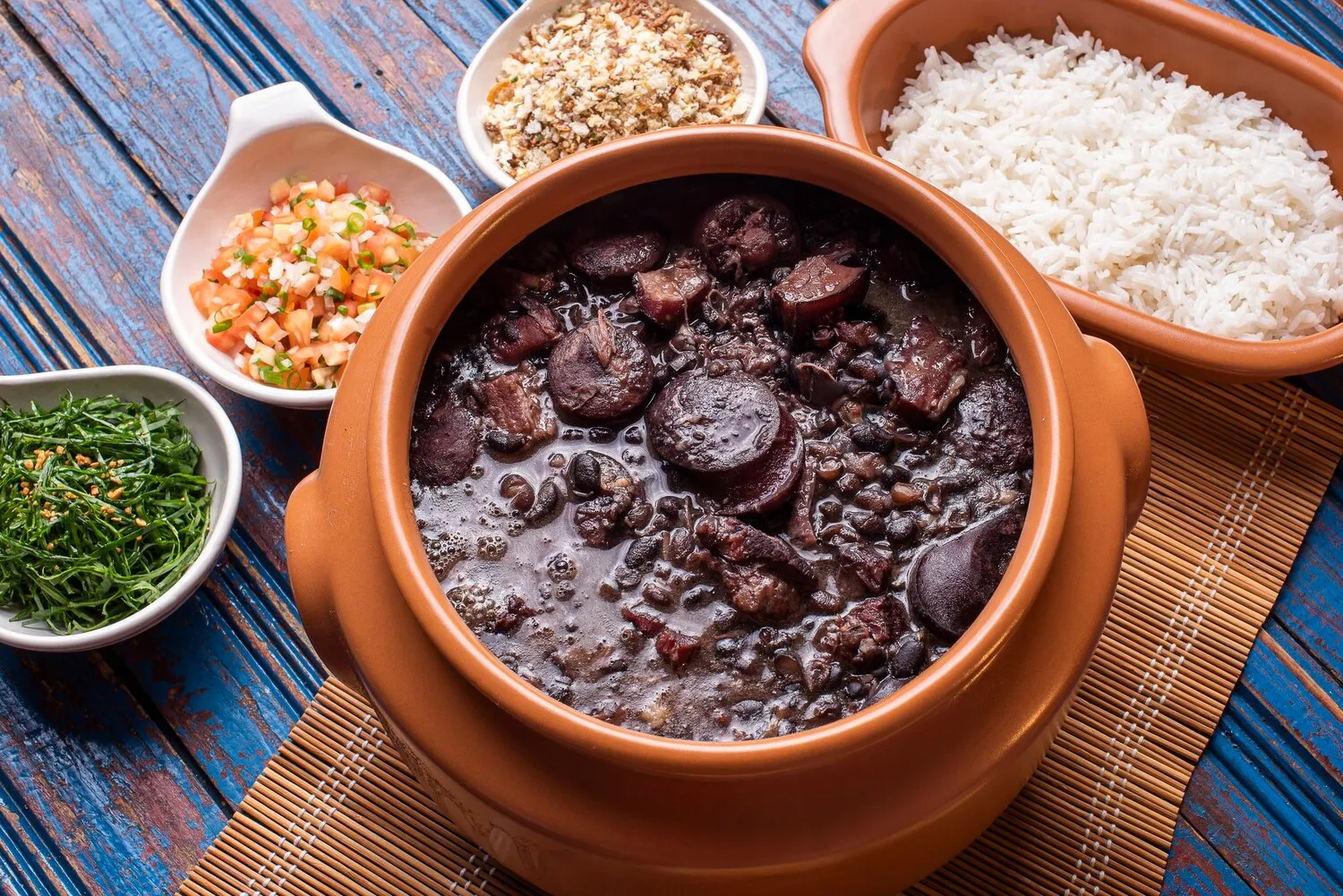
Feijoada
A hearty stew of black beans with various smoked pork and beef cuts, served with rice, collard greens, farofa, and orange slices.
Nutrition Facts
* The % Daily Value (DV) tells you how much a nutrient in a serving of food contributes to a daily diet. 2,000 calories a day is used for general nutrition advice.
Adriano's Restaurante
Feijoada's origins are debated, with some believing it originated among enslaved Africans who combined discarded pork and beef scraps with black beans. Others suggest it evolved from European stews brought by Portuguese colonizers, adapted with local ingredients. Regardless of its precise origins, feijoada became a staple of Brazilian cuisine, representing a blend of cultures and ingredients.
Feijoada is more than just a meal; it's a cultural event in Brazil, often served on weekends, especially Saturdays, as a communal gathering. It symbolizes hospitality, family, and Brazilian identity.
Communal Meal
Feijoada is typically prepared in large quantities and shared among family and friends, fostering a sense of community.
Weekend Tradition
Serving feijoada on Saturdays is a long-standing tradition in Brazil, allowing people to relax and enjoy a leisurely meal together.
Regional Variations
While the basic recipe remains consistent, regional variations exist, with different types of meats and accompaniments used depending on the region.
Symbol of Brazilian Identity
Feijoada is often considered a national dish of Brazil, representing the country's diverse cultural heritage and culinary traditions.
Feijoada boasts a rich and savory flavor profile, characterized by smoky meats, earthy black beans, and subtle spices. The combination creates a hearty and satisfying dish.
The primary flavors come from the black beans, which provide an earthy and slightly sweet base. The various smoked pork and beef cuts contribute a deep, savory, and smoky taste. Common meats include dried beef (carne seca), smoked pork ribs, sausage (such as linguiça or paio), and bacon. Bay leaves and garlic are often used to enhance the flavor. The traditional accompaniments – rice, collard greens, farofa (toasted cassava flour), and orange slices – offer contrasting textures and flavors that complement the richness of the stew. Orange slices provide a refreshing citrus counterpoint, while farofa adds a crunchy texture.
Soaking the Beans
Soak the black beans overnight or for at least 4-6 hours. This helps to soften them and reduce cooking time.
Desalting the Meats
Salted meats, such as carne seca, need to be desalted before cooking. Soak them in water for several hours, changing the water frequently.
Cooking Time
Feijoada requires a long cooking time, typically several hours, to allow the flavors to meld together and the meats to become tender. Low and slow cooking is key.
Layering the Flavors
Add the meats in stages, starting with the ones that require the longest cooking time. This ensures that all the meats are cooked properly and contribute to the overall flavor of the stew.
Accompaniments are Key
Don't skip the accompaniments! Rice, collard greens, farofa, and orange slices are essential for balancing the richness of the feijoada.
Explore additional Brazilian dishes and restaurants
Explore BrazilianDiscover top dining spots and culinary experiences in Santo André.
Explore Santo AndréLearn more about the food culture, restaurant scene, and culinary heritage of Brazil.
Explore Brazil